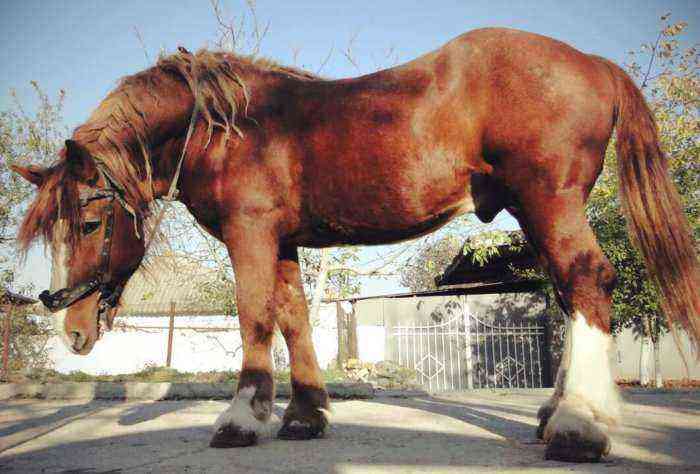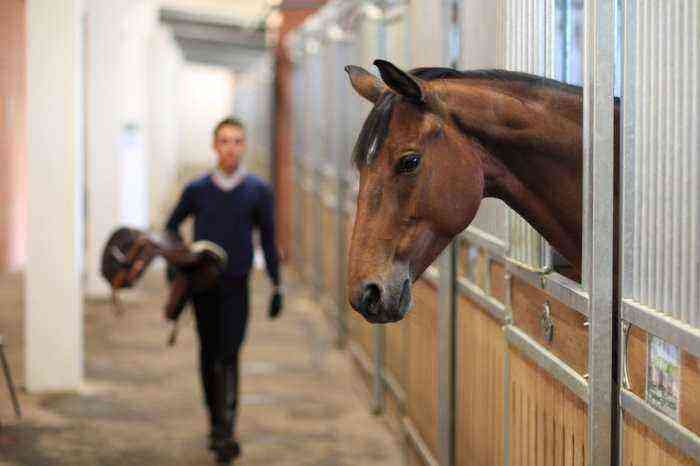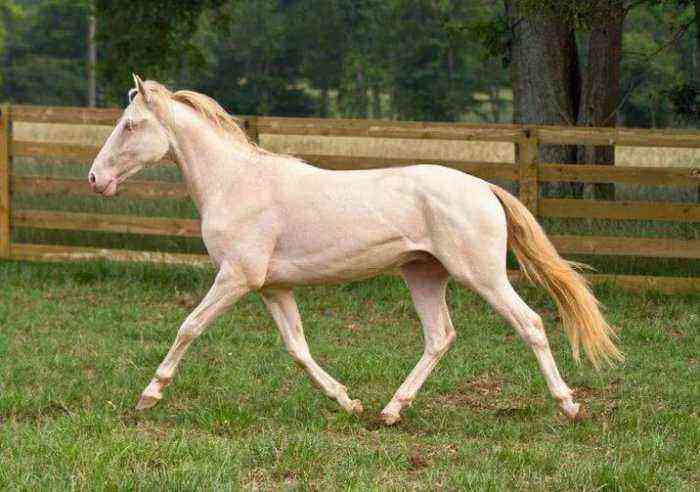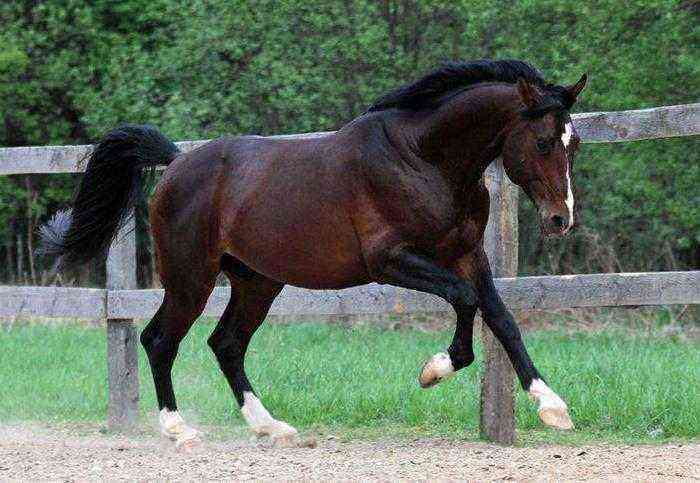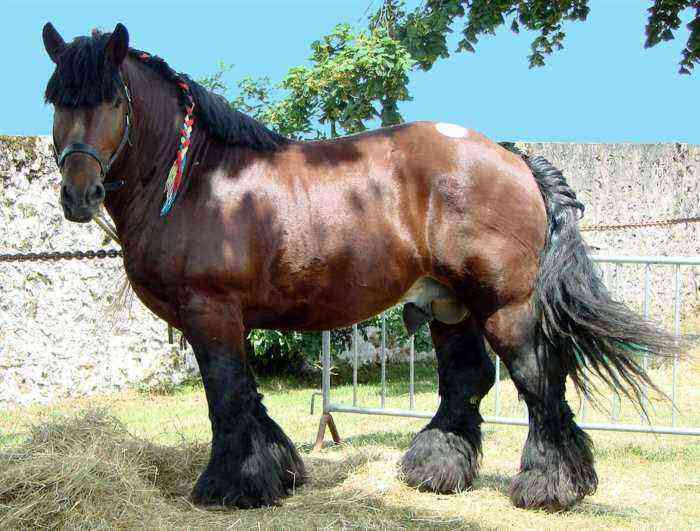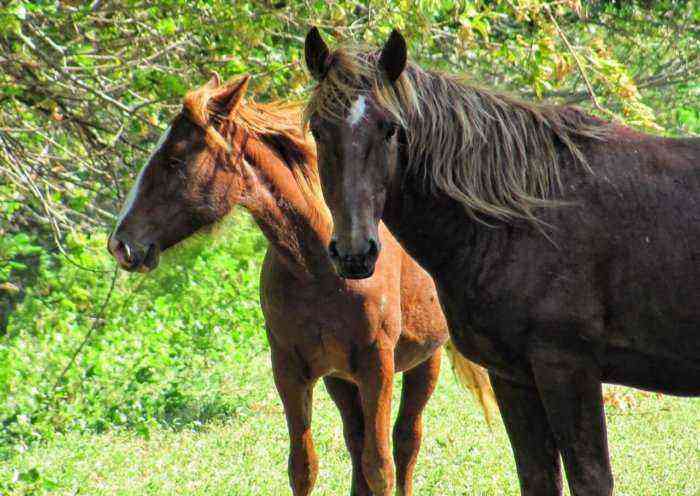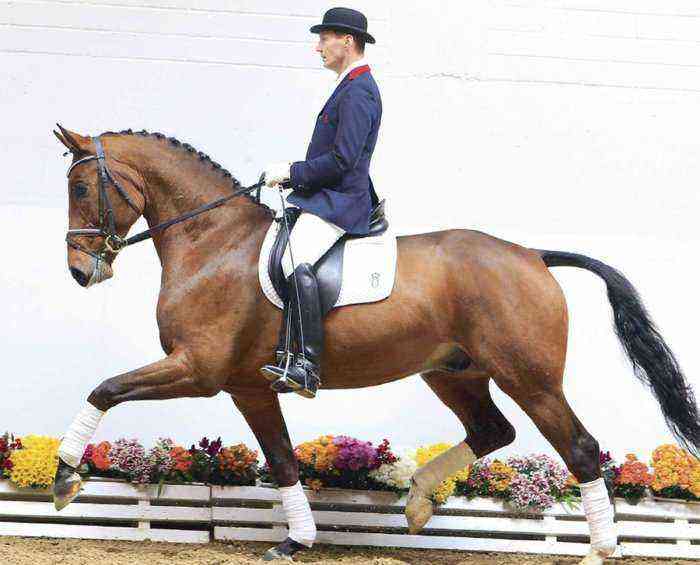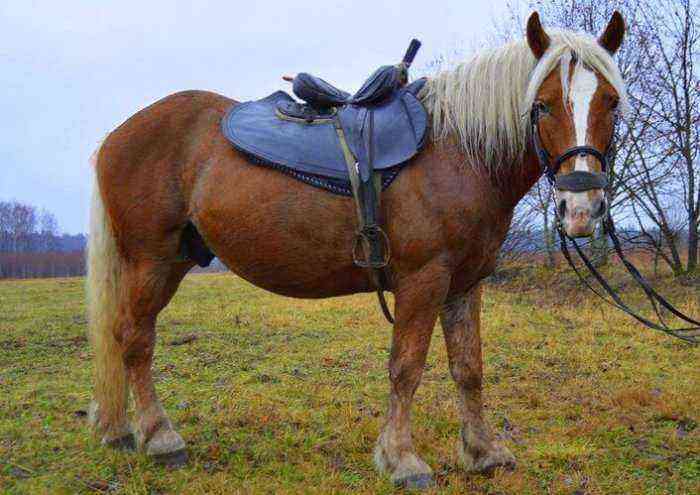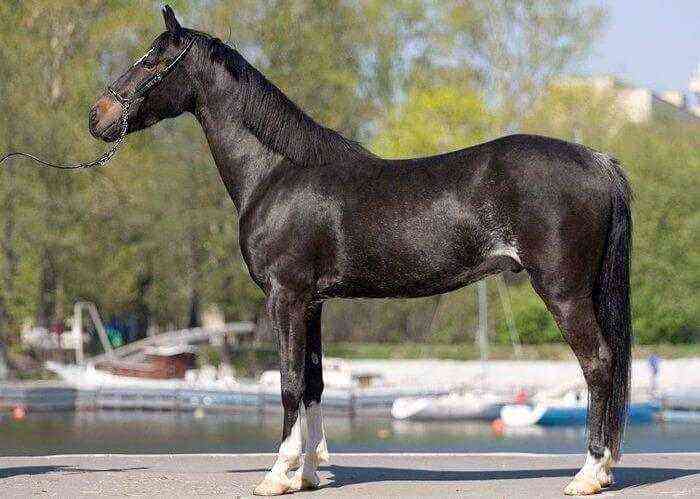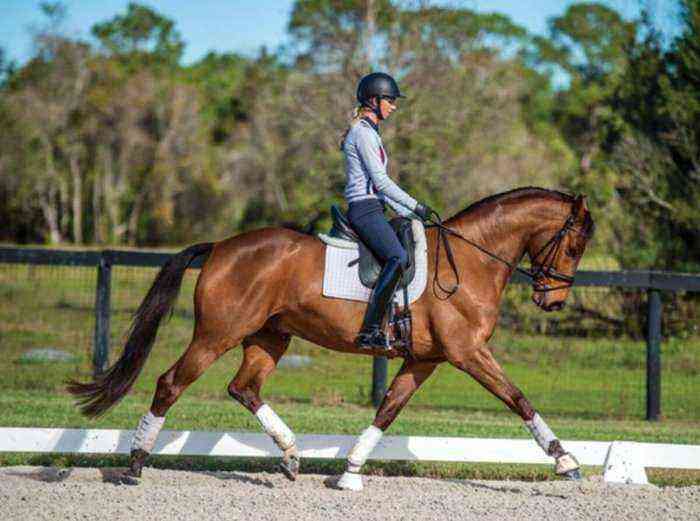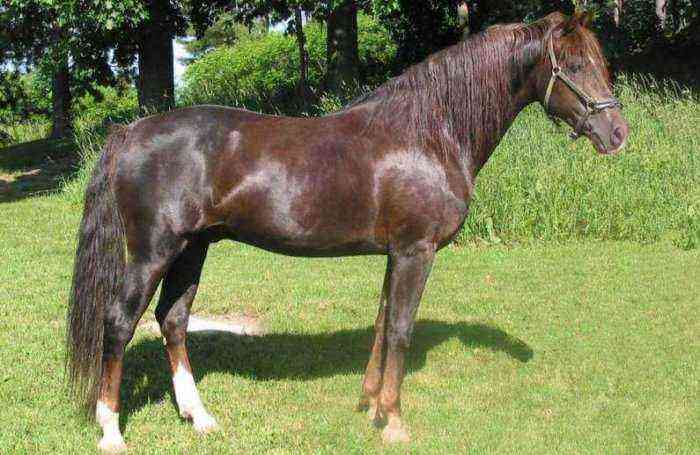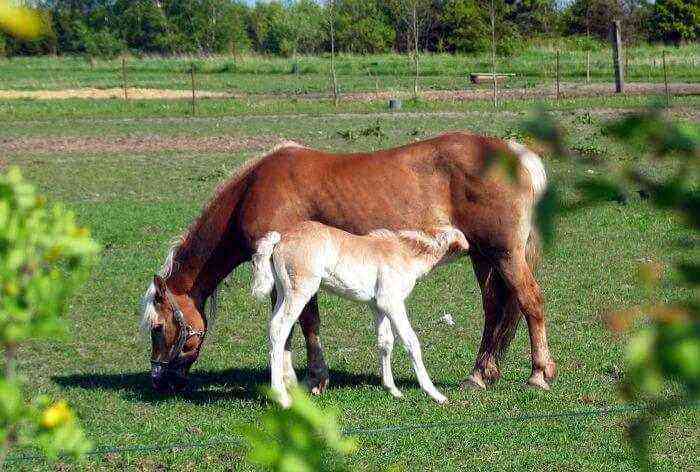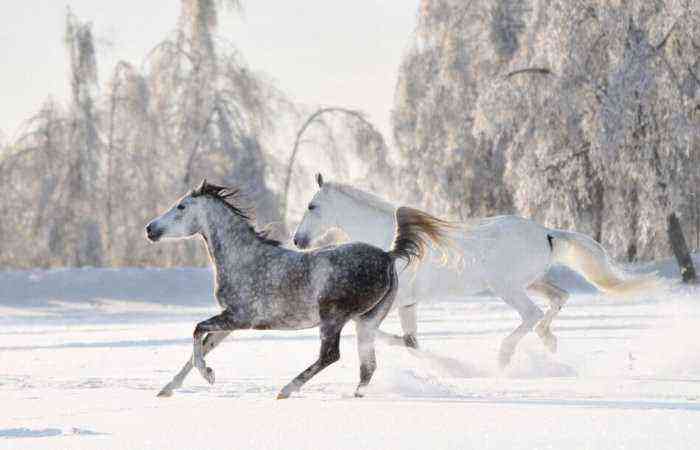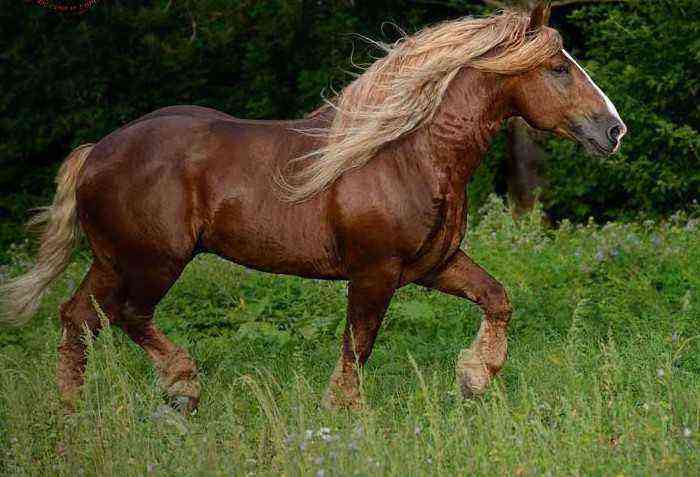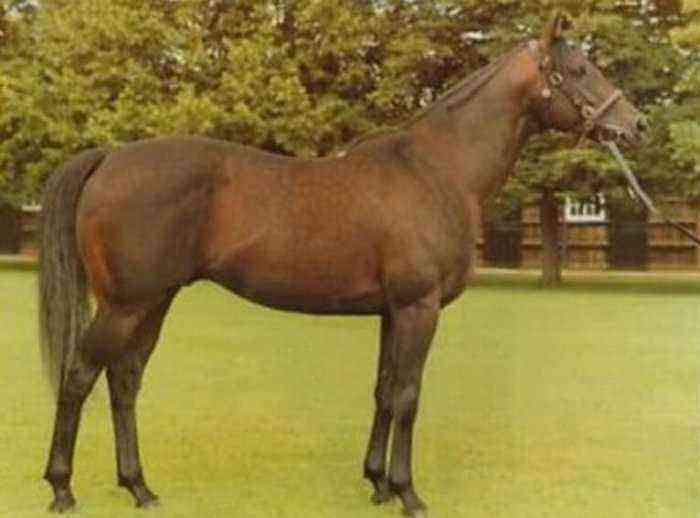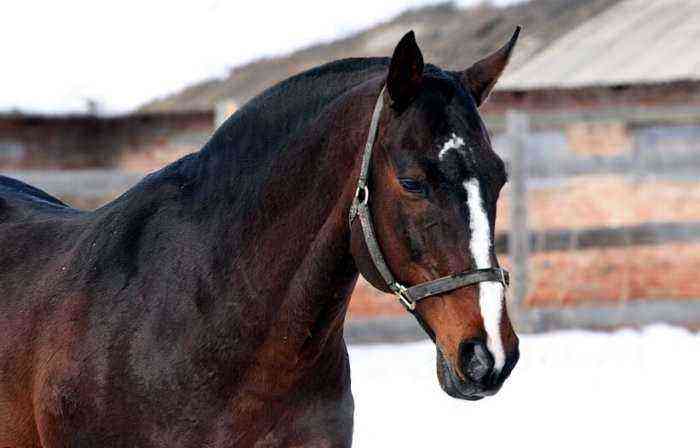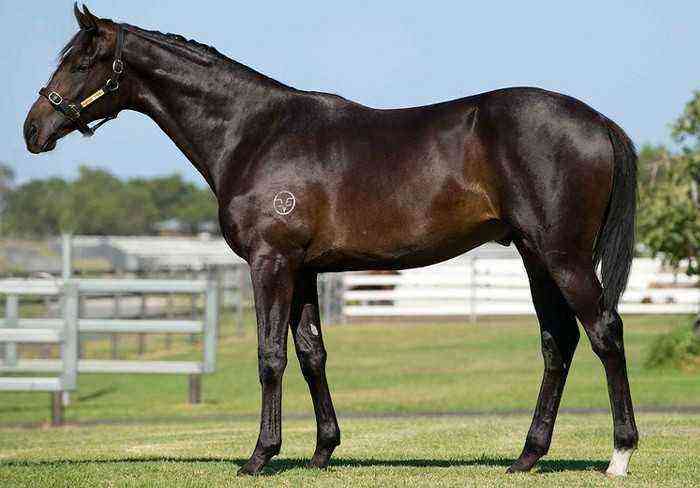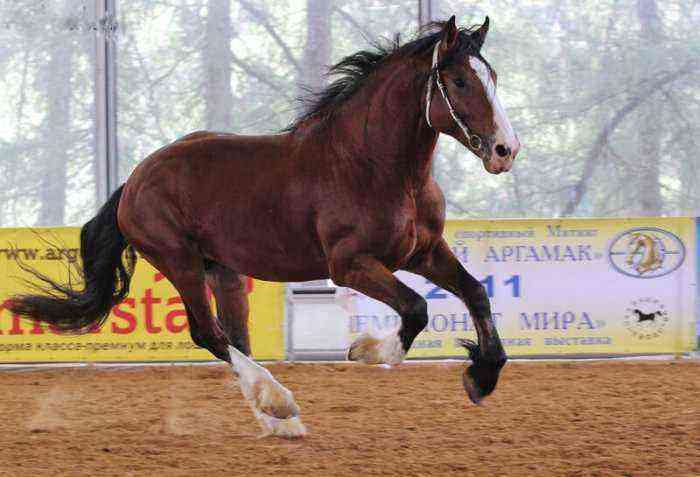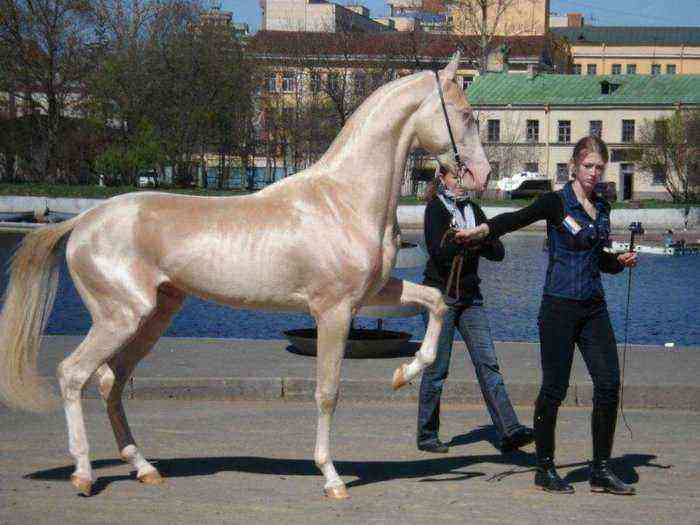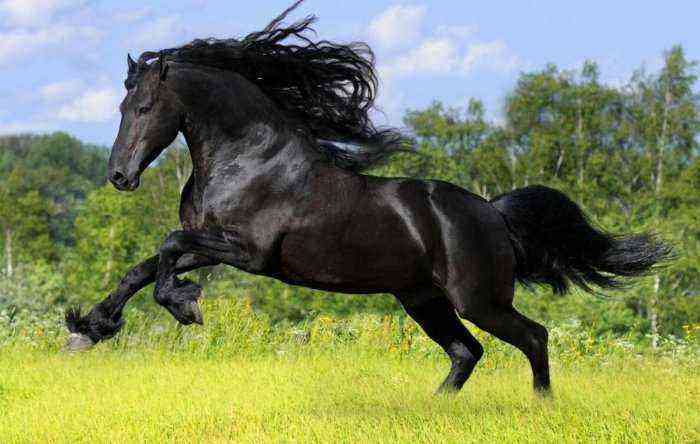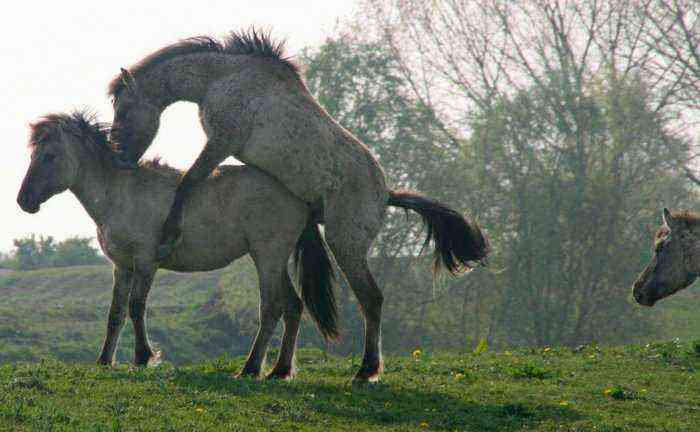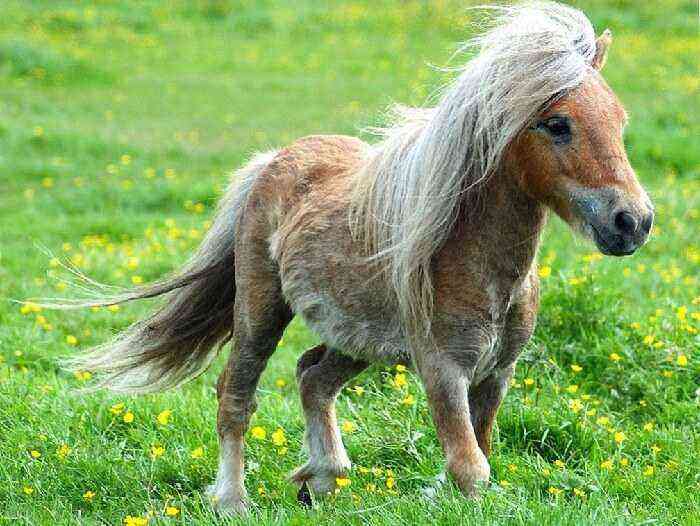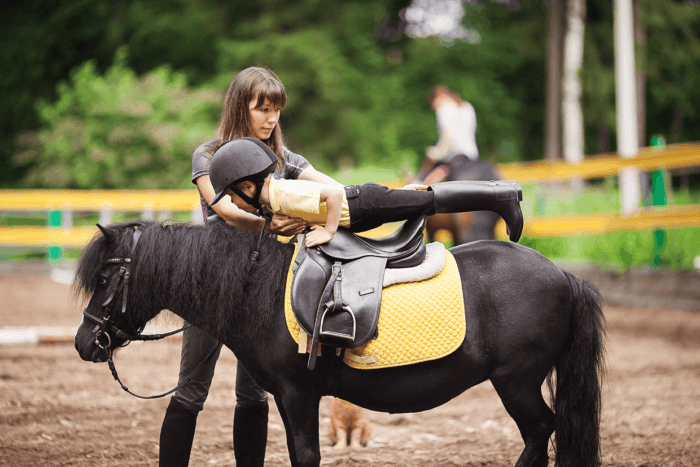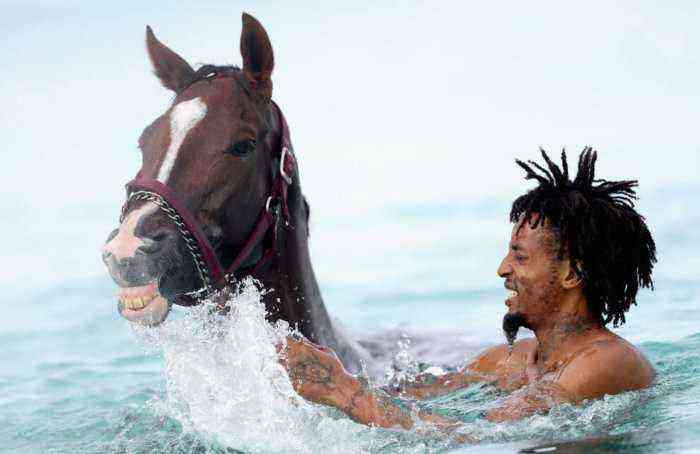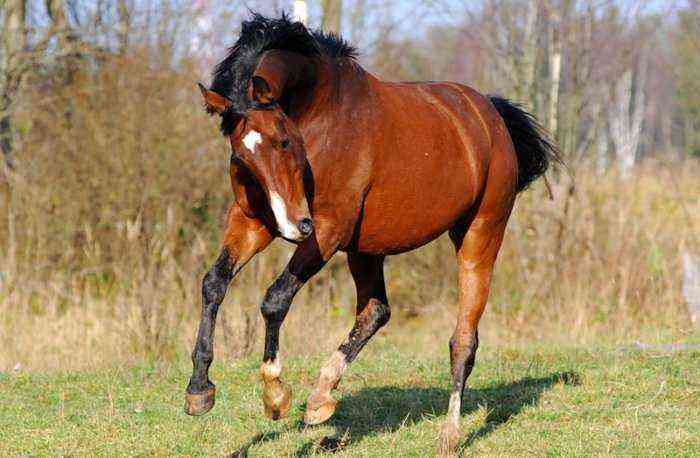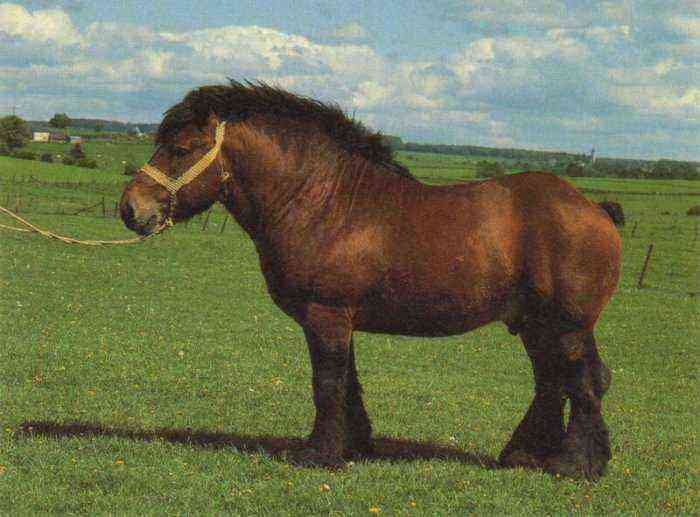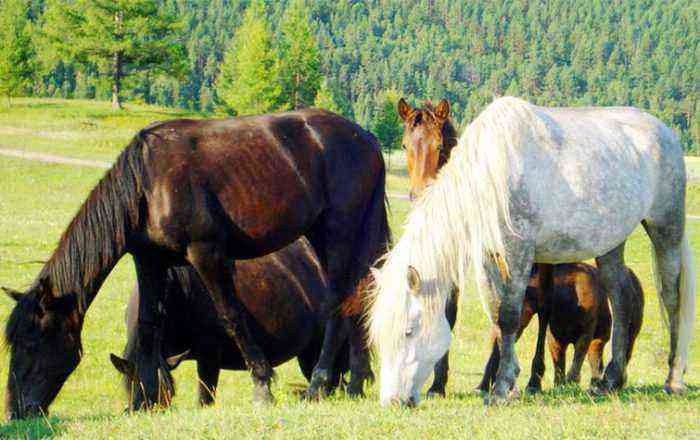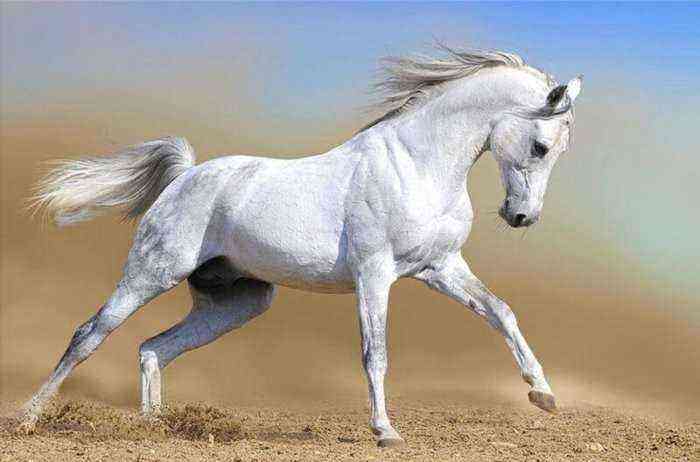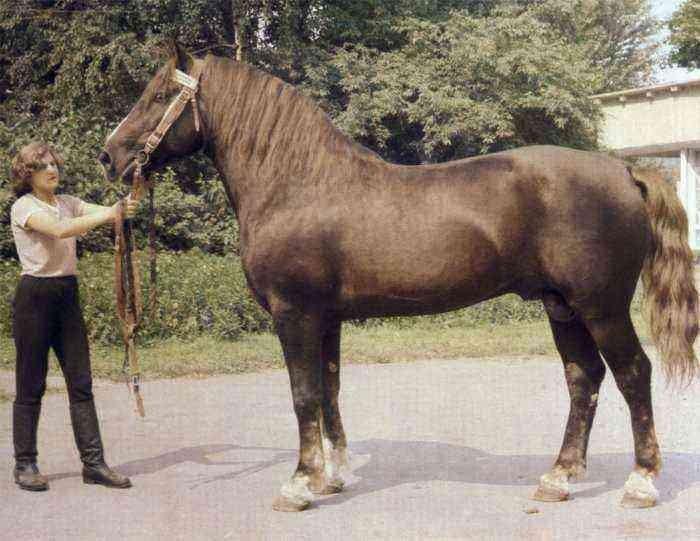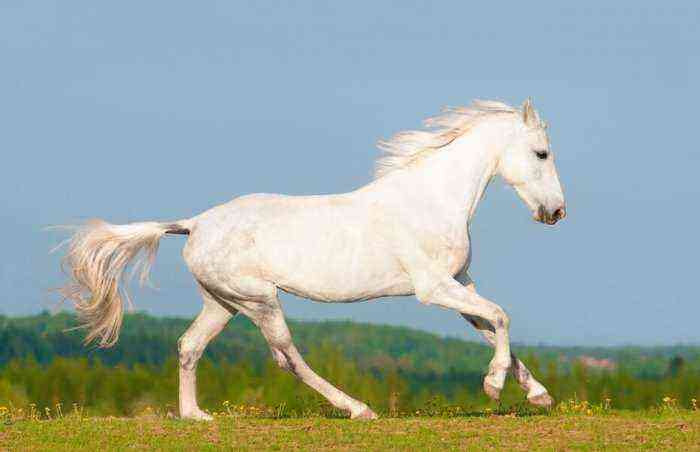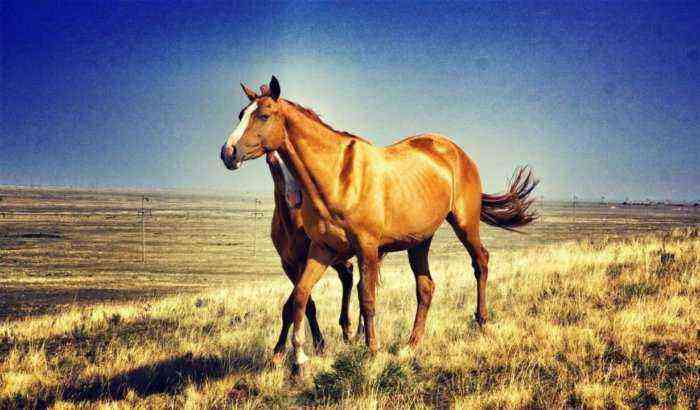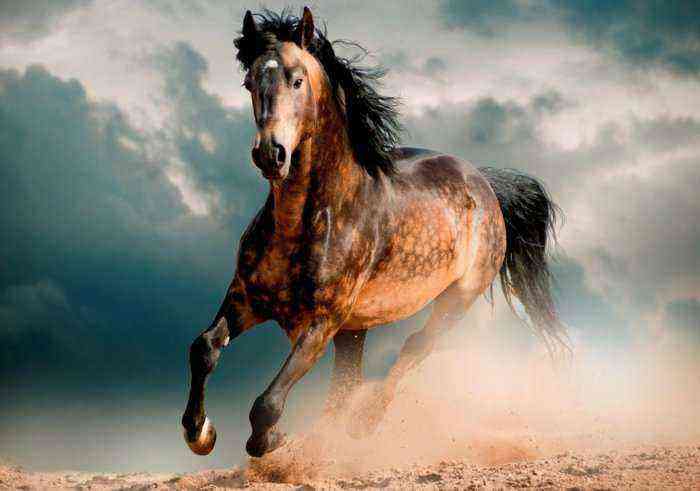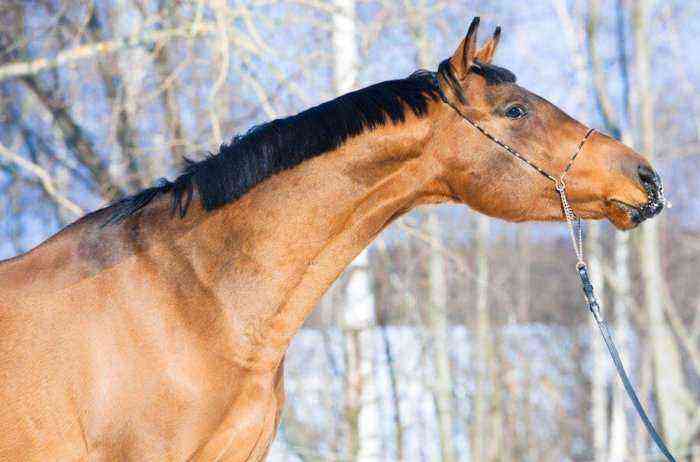The pinto horse is the pride of American breeders. Although, in fact, animals with such a coloration are not a separate breed, the owners of such horses treat them extremely reverently and with special care. And the reason here lies not only in the original appearance of the horse, but also in the historical attitude towards it.
Pinto horse breed
History of breeding
To date, reliable facts about the origin of this breed line have not been found. In this regard, researchers put forward a number of theories in which they point to the probable homeland of such horses. Most opinions agree that pintos are natives of Spain. This is evidenced by the name of the breed. It comes from the word “pintado”, which is translated into Russian as “painted”.
But whether this variety really appeared on Spanish lands is a moot point. In some surviving monuments of ancient Egyptian culture, there is evidence of the use of horses in everyday life, which are extremely similar in description to the pinto. Such evidence dates back to the XNUMXth millennium BC. e.
Separate images of the ancestors of the breed have also been found in the Middle East. They were immortalized by ancient people in rock paintings in caves.
The appearance of the breed in America
Most likely, scientists will not succeed in obtaining accurate information about the origin of these animals. But on the other hand, the further history of the breed, starting from the XNUMXth century, is clearly spelled out in the sources and has survived to this day.
In the XNUMXth century, spotted pinto horses were highly valued in Europe. They were the pride of the nobility, and were also included in the personal collections of emperors and kings. But with the advent of the Andalusian and Thoroughbred horse breeds, which were distinguished by their outstanding speed and endurance, the popularity of skewbald horses gradually declined.
Pet owners were looking for any way to get rid of pintos that had lost popularity. This opportunity was provided by the expedition of Hernando Cortes, who arrived in America in 1519. The conquistadors brought with them a large number of spotted horses, which were outlandish for the local population and attracted great interest.
The native population of America admired the agility, endurance and camouflage abilities (it was quite difficult to see them in the thickets) of such animals. They were extolled and carefully bred in the tribes. Based on the piebald horses brought by the conquistadors, even the local Appaloosa breed was bred.
Reference. Over time, many Americans began to consider piebald pintos as a true symbol of the Wild West. That is why even today an extremely reverent attitude towards these animals has been preserved.
External Features
Since the pinto is not a separate breed, but rather a certain type of animal color, it is quite difficult to choose specific appearance standards for them. There are several generally recognized types of such horses. Moreover, the entire livestock is divided in accordance with two main classifications.
The first suggests a difference in height. In this regard, three types of animal appearance are distinguished:
- Miniature horses, whose height does not exceed 86 cm.
- A category of ponies that includes pinto horses. At the withers, they reach only 142 cm.
- Ordinary horses. This group includes all horses with a height of over 142 cm.
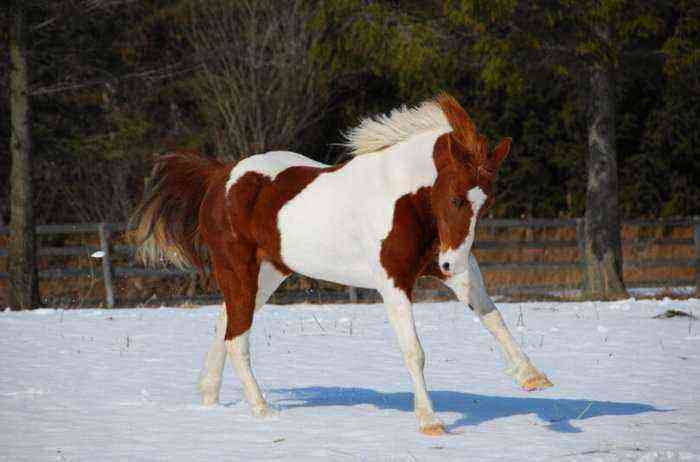
Pinto
The second classification involves a division based on the breed and purpose of the horse. It includes the following types:
- Horse. This category includes piebald representatives of Scottish ponies, American trotters, Hackney and some other breeds.
- Walking. This type suggests a particularly beautiful exterior of animals. These include Morgan horses and purebred spotted Arabian horses.
- Hunting. It includes purebred piebalds as well as Welsh ponies.
- Characteristic. Many American breeders believe that this type best conveys the conformation features of true pintos. It is believed that their appearance is the same as that of the horses brought to America by Cortes.
As for the general features that make it possible to classify a horse as a pinto breed, spotting is the main one among them. The body of such a horse suggests a black or piebald base color. But extensive white spots are scattered throughout the body, which create heterogeneity in color. It is worth noting that the difference in colors affects not only the coat, but also the skin of the animal. Under a layer of hairs of the main color, it has a gray color. Under white spots, the skin is colored pink.
In addition to the basic combinations of bay and white and black and white, pintos also often have colors that combine three colors at once.
Suits and subspecies of color
Despite the general piebaldness, a number of different colors stand out within the Pinto breed, suggesting their own characteristics. So all breed excuses are divided into two main types:
- Tobiano. With this color, white spots are located throughout the body, often passing through the spine of the animal. In this case, only the head remains painted exclusively in the main color. The reason for the manifestation of this color is a gene, which is also called tobiano.
- Overo. Spotting in this case is also caused by the gene of the same name. But unlike the previous suit, white spots can be located throughout the body and even on the head. The only exception is the spine, which they never cross.
The color with the predominant overo gene, in turn, suggests several more color subspecies. These include:
- Frame overo. In animals with this color, white spots are horizontal stripes of different widths (sometimes they occupy the entire side of the animal). Such stripes run along the body, neck and head of the horse. A unique feature of this coloring is also the blue eyes of the animal.
- Splashed White Overo. In this case, the head of the animal is a solid white spot. The tail is also white. In addition, an extensive white spot covers most of the body. Sometimes the main color of such horses appears only on the ridge and ears.
- Sabino overo. This coloring is considered the most original. With this coloring, the muzzle and lower part of the legs of the horse are painted solid white, and small light spots are scattered throughout the body. Often this coloration is accompanied by partial or complete deafness of the animal.
A frame overo gene can be inherited in a homozygous or heterozygous state. In the first case, the foals die within a few hours. Only babies with an inherited heterozygous state of the gene remain viable.
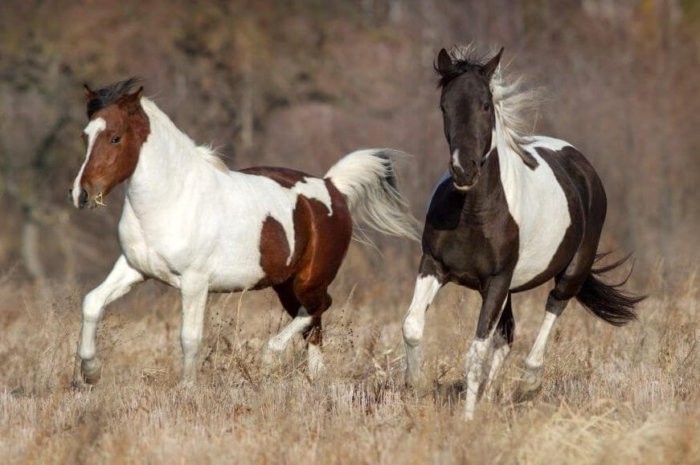
Pinto colors
It is also worth noting that sometimes more bizarre colors appear in foals. So, a baby can inherit both the tobiano and overo genes from their parents. In this case, the born young animals are classified as a separate category of “tovero”, the representatives of which carry the features of both colors.
Maintenance and care
The content of these animals does not imply special rules. It is enough to provide them with optimal conditions for breeding any horse, including:
- arrangement of a warm, dry stable with individual stalls for each animal and soft bedding;
- the presence of an extensive walking area on which the animal can run freely;
- combining a walking area with a pasture where a horse can not only run, but also graze;
- 3-4 meals a day.
The process of caring for an animal also does not involve any particular difficulties. It includes the following points:
- daily replacement of dirty bedding of the animal, as well as cleaning the feeder and drinker;
- general cleaning of the stall and stable, which is carried out once a week;
- daily cleaning of wool and hooves of the animal;
- neat combing of the mane with a special comb;
- carrying out, in parallel with combing out the wool, examining the body of the horse for injuries, wounds and signs of a developing disease;
- occasional bathing of the horse.
Attention! It is mandatory to vaccinate animals against diseases characteristic of the region.
Also an important point is the examination of the condition of the teeth and oral cavity of the horse, which is carried out every six months. When identifying problems with the teeth, a veterinarian specializing in this direction is called to the animal.
Value in the market
Until recently, pinto horses were valued quite low among breeders. The reason for this was their non-purebred pedigree. But today, thanks to the work of breeders, this problem has been eliminated, and therefore the breed, which is distinguished by its original elegant exterior, has gained well-deserved popularity. Many breeders from all over the world seek to buy such a horse for themselves.
This horse is quite expensive. But a specific amount is determined by a number of parameters, including:
- the presence of sports achievements;
- pedigree;
- the degree of purity of the breed;
- health status;
- gender of the animal.
Such horses are popular today not only in equestrian sports. They are widely used in the film industry, are attracted to work in agriculture, grown as decorative, to participate in various exhibitions. Quite often, such horses can be found in equestrian tourism.
Pinto horses have a long and rather obscure history. Their origin is not known for certain. But despite this, they have become a real source of pride for the American people. The reason for this is the bright exotic exterior of animals, as well as a calm, meek disposition and outstanding working qualities.
